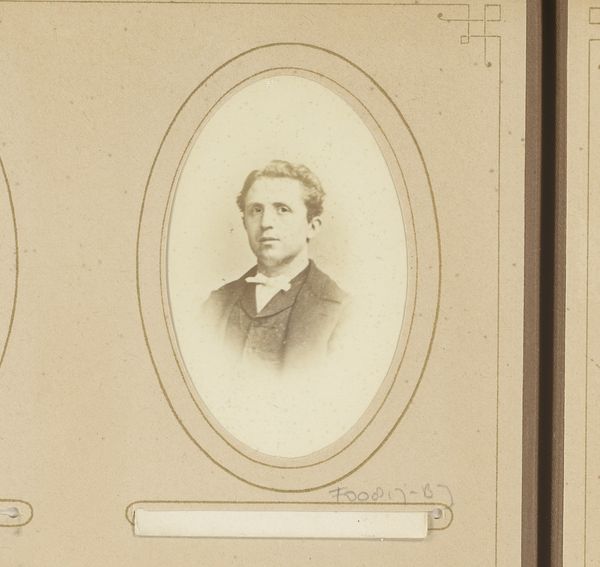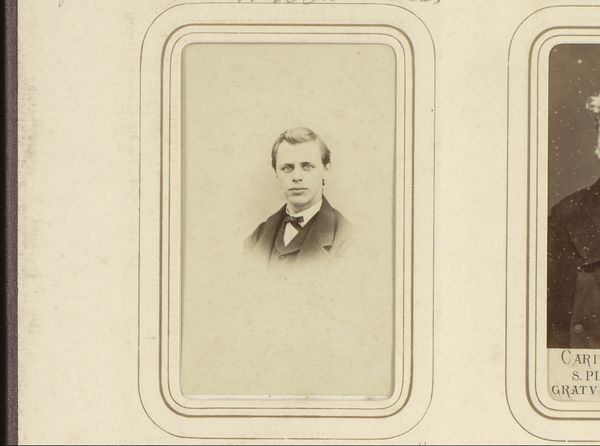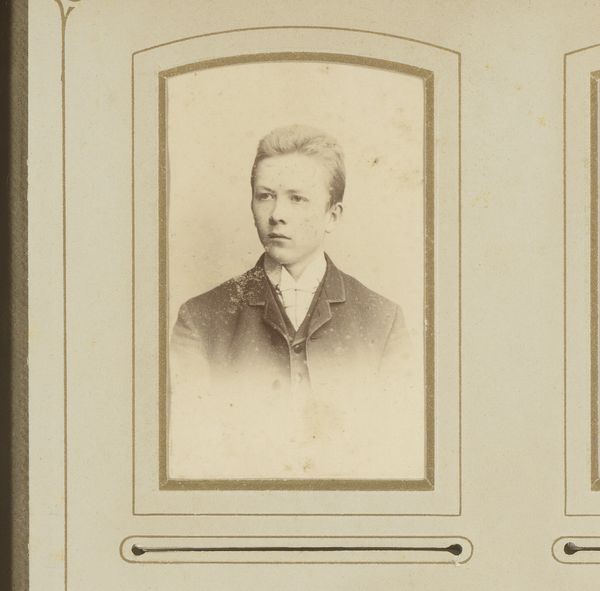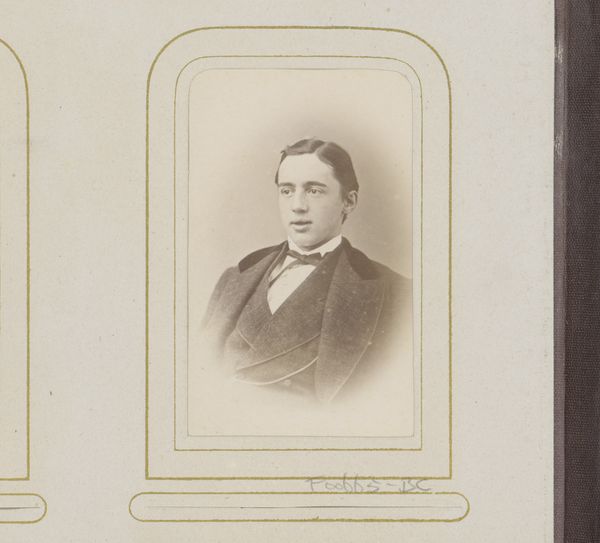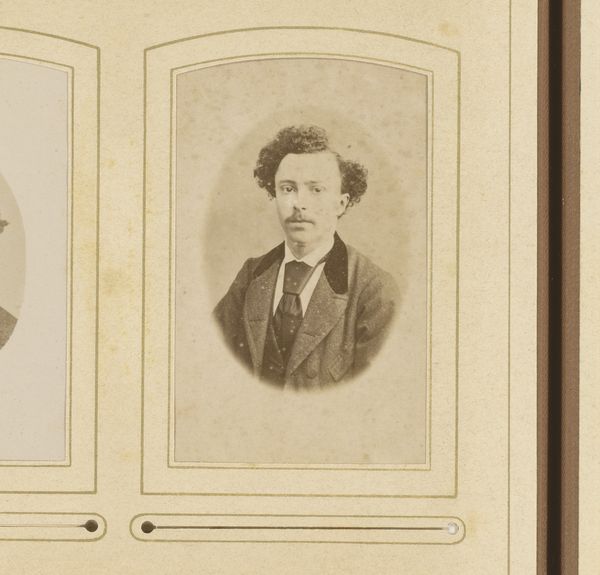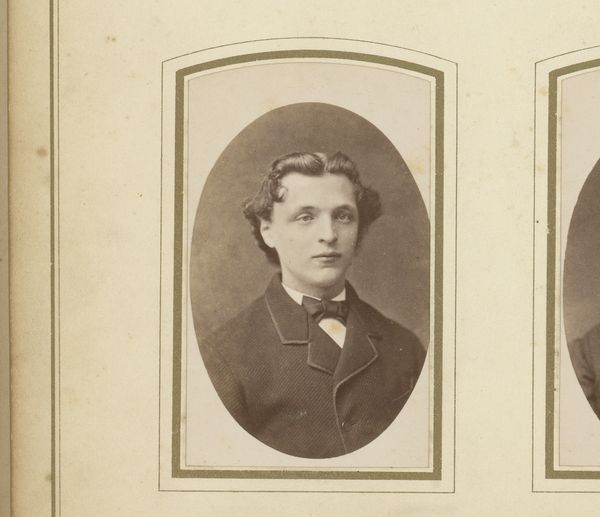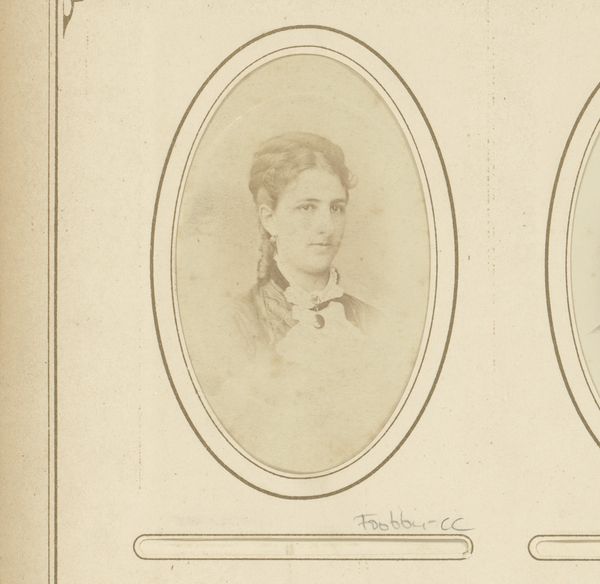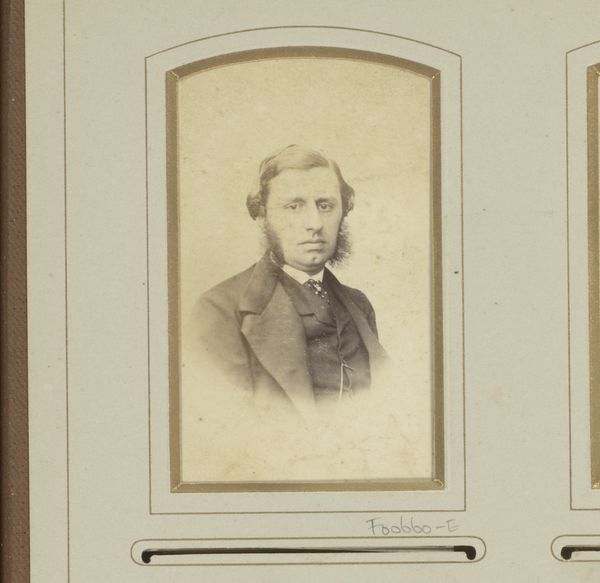
Dimensions: height 87 mm, width 53 mm
Copyright: Rijks Museum: Open Domain
Curator: Let's examine this striking portrait, entitled "Portret van een man met bakkebaarden en vlinderstrik"—"Portrait of a Man with Sideburns and Bow Tie." It’s a daguerreotype dating from approximately 1865 to 1895, created by Thomas Martin Staas. Editor: The image is quite haunting, isn't it? There’s something very intense in his gaze. The high contrast and limited tonal range lends it an almost spectral quality. The format—clearly for display in an album—also hints at the culture of remembering the departed. Curator: Indeed. And consider how the crispness of the detail around the face—the eyes, the meticulously groomed sideburns—is subtly juxtaposed against the softer focus of his attire. It directs the viewer's eye precisely where Staas intended: to the sitter’s very being. The slightly off-center framing reinforces that intensity. Editor: I think that intensity, and his rather conservative clothing, should make us question what he is *not* presenting. Who would he be outside the strictures of photographic portraiture? Looking beyond face value, can we consider the work as an early representation of performance within identity? And in terms of identity: Who was permitted or commissioned to sit? Whose likeness did early portraiture deny? Curator: That’s a compelling intersectional lens. Although, as a daguerreotype, it’s quite early photography and very likely that, in and of itself, would have been enough for a commission. However, there is something quite posed about it, a staging of middle class gentility in an attempt to signify status. But notice how the romantic softness undermines this… the balance of control and self presentation, softened through the technology. Editor: It would have been radical for Staas, or any early portrait photographer, to completely remove the staging that mirrored accepted values of the period. Perhaps though we can recognise it as the starting point to interrogate how identity is expressed and how sitters might also attempt to claim or question norms from within existing frameworks. The subtle rebelliousness perhaps is not immediately noticeable. Curator: Fascinating how different aesthetic considerations and historical contexts can reshape our understanding. Editor: Absolutely. Seeing the art this way lets the image interact with modern concepts and allows discussion about contemporary themes of representation.
Comments
No comments
Be the first to comment and join the conversation on the ultimate creative platform.
